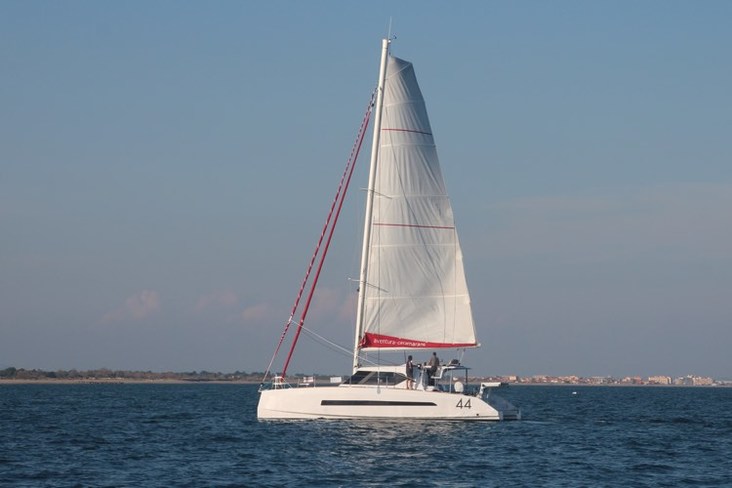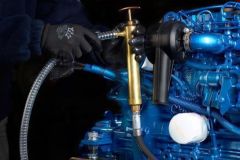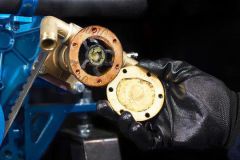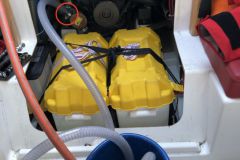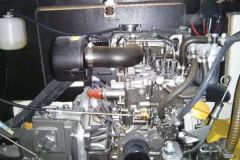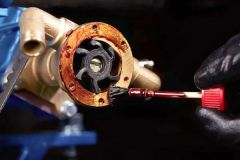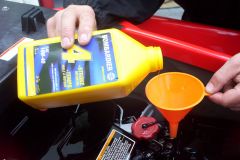On a sailboat, we don't like to use the engine. But there are many situations that force us to do so. How can we save fuel? How to limit fuel consumption? These tips apply to a sailboat, but are just as applicable to a motorboat...
What is the effect on the price?
The factors that have the greatest impact on the consumption of a boat engine are the weight of the boat, its speed of travel and its length at the waterline. Then come the hull shapes, the dunnage and the weather elements.
First recommendation, the choice of the target speed
Each displacement hull has its own hull speed. This characteristic is the result of a mathematical formula which takes into account the length at the waterline, affected by a coefficient depending on its resistance to forward motion. To reach its hull speed, a hull requires a power of about 2 kW per ton. On the other hand, it only needs 0.5 kW/ton to move at 70% of its hull speed.
Settling for a slightly lower speed results in great fuel economy
In fact, we can see that it takes four times as much power to go from 70% to 100% of hull speed. And the figures are even more frightening if you intend to exceed it. The table below helps to set the ideas and to give orders of magnitude.
However, one should be careful not to adopt a speed that is too low, because diesel engines do not like to work at less than 50% of their maximum power (this is less true with electronic injection engines).
- Length of the boat: 9 m. Float: 9 m, hull speed: 6,9 kts, eco speed: 4,8 kts
- Length of the hull: 10 m. Float: 10 m, hull speed: 7,2 nds, eco speed: 5 nds
- Length of the boat: 11 m Float: 11 m, hull speed: 7,6 kts, eco speed: 5,3 kts
- Length of the boat: 12 m. Float: 12 m, hull speed: 8 kts, eco speed: 5,6 kts
- Length of the boat: 13 m. Float: 13 m, hull speed: 8,3 kts, eco speed: 5,8 kts
- Length of the boat: 14 m. Float: 14 m, hull speed : 8,6 nds, eco speed : 6 nds
- Length of the boat: 15 m. Float: 15 m, hull speed : 8,9 nds, eco speed : 6,2 nds
Second recommendation, optimize the dunnage
It is not uncommon to see sailboats evolving under the only thrust of their propeller, all sails furled. In the case where the objective to be reached is located upwind, it is undeniable that mechanical propulsion will be the most relevant. On the other hand, it will be very advantageous to carefully track down everything that hampers the dunnage. We will then focus on lowering the diabolical "eurosboudineuros" constituted by the rolled gennaker.
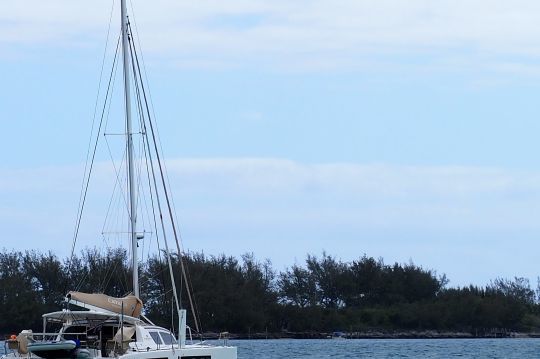
It is also easy to flatten paddle boards and other water toys and to refrain from towing the dinghy. If the wind is really head-on, it will be preferable to leave the mainsail in its lazy-bag. On the other hand, using correctly set and adjusted sails when the direction of a light wind allows it, undoubtedly saves some fuel.
Important note
The author of this article and the entire editorial staff have no interest whatsoever in the suppliers of the equipment and products mentioned below. Only the attention of the reader is taken into consideration.
Third recommendation, the use of a fuel saver
Many of these equipments have no real efficiency, but there are also some that work wonderfully. "eurosEconokiteuros" is one of them. Simple in design and easy to install, this system is widely used on land vehicles. It allows to save 15 to 30% of fuel (depending on the type of engine), which is not negligible. However, it appears a considerable pitfall to equip marine engines. Indeed, the calories necessary for the operation of the reactor are provided by the exhaust gases, which are particularly well insulated on the machines of our boats. We must therefore resort to an electric heating system that can be supplied by a resistance manufacturer. 35 watts (or 3.5 amps at 12 volts) are needed to obtain the required 300°. Photos and explanations can be found in the (digital) book: "La belle et le bouchon gras".
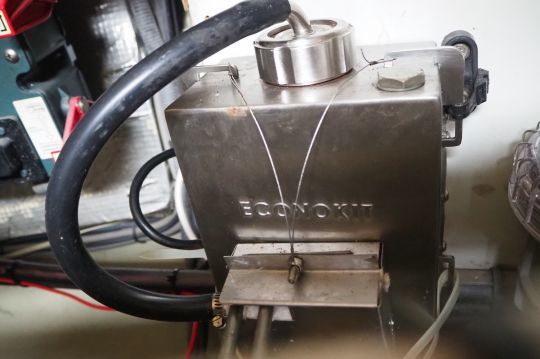
Fourth recommendation, graphene in oil
Developed and patented by a Geneva-based company, this product called "eurosGraphene Oil Ultramatrix" uses advanced nanotechnology to optimize the mechanical efficiency of thermal engines. Mixed with the lubricant contained in the crankcase, this additive reduces fuel consumption by an additional ten percent by minimizing the various internal friction and also reducing noise and mechanical wear.
Fifth recommendation, alternative energy
When you drive the boat, its alternator produces electric current that is immediately used to power the autopilot, navigation instruments, refrigerators and other comfort equipment. By installing solar panels and a wind turbine, the alternator no longer needs to produce electricity.
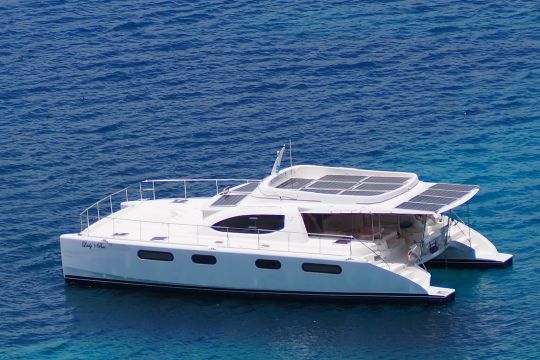
From then on, we will save the few hundred watts that it is able to provide from the fuel. euros note that the implementation of these renewable energy producers will be easier on a boat with mechanical propulsion than on a sailboat. We can even dare to do without a generator, while having a washing machine, induction cooking plates, a coffee percolator, an ice maker...

 /
/ 